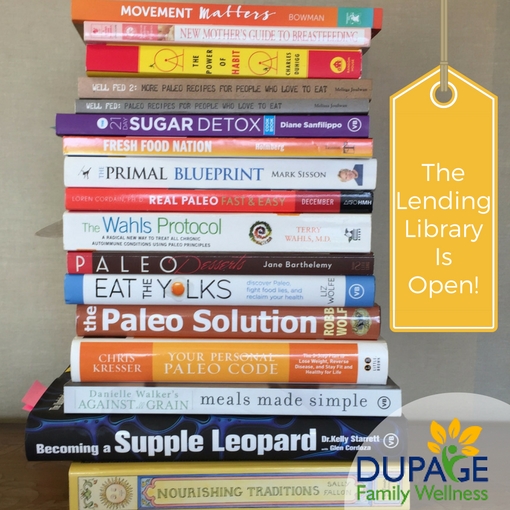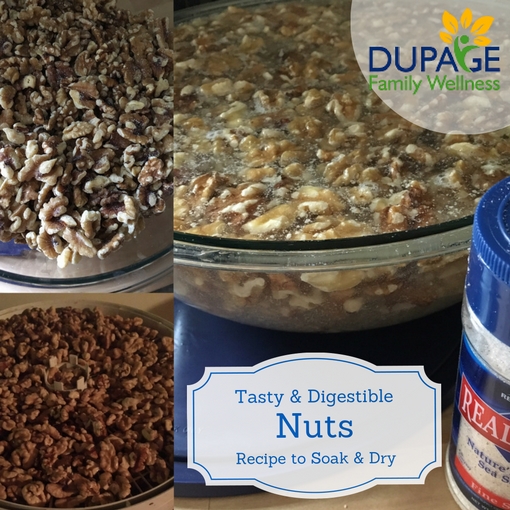
“My temperature is 101! Where is my ibuprofen?”
Is this your first reaction to a fever? It might not be the best action to take.
Why Taking Medicine to Reduce a Fever Might Not Be the Best Approach
A fever is the body’s natural reaction to fight off an infection, like a cold or the flu. A fever is a symptom of an illness, but not an illness itself.
Many illness-causing germs thrive at or below the body's normal temperature. Two purposes of a fever are:
- A fever increases the body’s temperature beyond the limit that invading microbes need to reproduce.
- A fever kicks your immune system into high gear, increasing the number of white blood cells which help fight the actual illness.
For most adults, 102-103 degrees is the ideal temperature for the body to kill off these microbes. (source) Research shows that letting a fever run its course may reduce the length and severity of illnesses such as colds and flu.
Furthermore, conventional methods of reducing a fever can do more harm than good. Tylenol (acetaminophen), Advil and Motrin (ibuprofin) all have side effects (read a long list on the package) that includes liver damage in adults and children, especially when taken frequently. Medications are foreign substances, which the body has to metabolize and filter. This requires energy that the body could be using to fight the actual illness that led to the fever in the first place.
What About Other Cold and Flu Symptoms?
There are many ways that our bodies fight off illness caused by viruses and bacteria. Coughing, sneezing, nasal mucous, vomiting, and diarrhea are ways that your body gets rid of pathogens. Taking medications to suppress these symptoms can slow down our bodies natural processes healing itself.
Read more ...

Did you know that research correlates giving thanks and improved happiness?
Keep reading to learn from two studies that make this connection.
Count Your Blessings vs. Burdens
The first study took three groups of people. One of the groups was told to write down things that they were thankful for in a journal, the second group was told to write down things that irritated them, and the third was to just make notes on events from the day with no emphasis on positive or negative spin. At the end of ten weeks, each group was followed up with. The group that wrote about gratitude was more optimistic and felt better about their lives. Another interesting finding was that the group that wrote what they were thankful for also had less visits to physicians and exercised more than the other groups. Wow! Who would think that something as simple as writing what you are thankful would correlate with less doctor visits.
Deliver Letters of Gratitude
The second study evaluated the effects of various positive psychology interventions. Each intervention was compared with a control group that was assigned to write down early memories. The intervention had the most impact when participants were instructed to write and personally deliver a letter of gratitude to someone who had never been properly thanked for their kindness. After delivering letters of gratitude, participants immediately showed a huge increase in happiness scores, and benefits to this group lasted a month!
Read more ...

I am excited about changes coming to the office space at DuPage Family Wellness. In the next 6 months, we will be painting, decorating, and building a consultation room. In the mean time, I've started with step 1: The lending library.
The Lending Library is Open Now!
There will be 3 types of information for you to use:
- Books: I have my entire collection of books available to you in a lending library! These range from cookbooks, to books about movement, to books about breastfeeding and more! If you want to read them, I am happy to loan them to you! Need a recommendation for your situation? I am happy to provide that as well! Please borrow the books while you are using them, but if you find them sitting around on your coffee table, bring them back so someone else can learn!
- Magazines: I have subscribed to some new magazines including Pathways to Family Wellness and Paleo Magazine.
- Binders: I am creating binders of reading material for patients. One will share important research articles, another will contain blog posts that I’ve written, and a third will be success stories and testimonials from patients! That being said, if you had a great experience at the office that you’d like to share, please send it my way and I’ll add it to the binder! If you are receiving this in your email, just respond to the email. If you are reading on the website, send an email it to This email address is being protected from spambots. You need JavaScript enabled to view it..
If you arrive early for your appointment- or just want to swing by and hang out, these resources provide valuable information for your journey to health! New information and research about health improvement comes out all the time. I try to keep learning and make sense of all this information for myself, my family, and my patients. We are all constantly striving to become healthier.
My passion is teaching others to improve their health, get relief from chronic health conditions, and feel great!
If you are interested in improving your health, please use the resources that I am extending to you, and tell a friend who is looking to improve their health as well!
Dr. Jamie Thomure

It is easy to make store bought nuts even tastier, and at the same time, easier to digest.
Nuts are nutrient dense, and provide a good balance of fat and protein, along with omega 3 fatty acids! They can be a great food for most people.
What Problem Occurs with Eating Raw Nuts?
One of the downsides to nuts is that they contain enzyme inhibitors like phytic acid. In nature, phytic acid prevents the seed from sprouting prematurely, safeguarding the nut until proper growing conditions occur. Unfortunately for humans, phytic acid can be considered an "anti-nutrient" because it binds to minerals (e.g. calcium, zinc, magnesium, iron, and copper) making them unavailable for the body, and inhibits enzymes that aid in digestion.
Although nuts are considered a nutrient dense, "healthy" food, the body will not benefit as much from nuts if the nutrients are not digested and absorbed. In addition, whole grains and seeds also have high levels of phytic acid, so eating them with nuts makes the problem worse. Read more about phytic acid. in nuts, grains, and seeds.
How Do You Solve This Problem?
It's easy! Soak and dry the nuts.
Our ancestors soaked nuts, seeds, and grains to start the process of breaking them down and making them easier to digest!
How Do The Nuts Taste?
I did a side by side taste test of soaked and dried nuts vs. nuts straight out of the bag. There is a definite difference. Nuts out of the package have a slightly bitter taste that is absent with the soaked and dried nuts!
Recipe to Soak and Dry Nuts
Ingredients:
- Nuts - any kind you like. For example: almonds, cashews, hazelnuts, pecans, pine nuts, walnuts, macadamia nuts, or brazil nuts. Note: Peanuts are not a nut, they are a legume, and have their own issues that are outside the scope of this recipe.
- Filtered water
- 1 TBSP sea salt
Directions:
-
Place nuts in a large glass bowl or mason jar
-
Cover completely with filtered water
-
Add sea salt and stir
-
Cover and let sit overnight or up to 24 hours
-
Drain and rinse nuts and lay them out on trays of dehydrator
-
Dry at a low temperature (about 105-150 degrees) for about 24 hours. If you don’t have a dehydrator, bake them in the oven at the lowest temperature of your oven for 12-24 hours.
-
Enjoy! Store your dried nuts in the refrigerator or freezer for best quality.
Soaking and drying nuts is not difficult, but it does take some time. I urge you to give it a try, and observe the difference. Let me know what you find on facebook!
Dr. Jamie Thomure
 I have some deep thoughts for you this week. Stay with me because this one is really important! Recently I was challenged to think about the priorities in my life! I sat down and figured out what is important to me. Here is what I came up with.
I have some deep thoughts for you this week. Stay with me because this one is really important! Recently I was challenged to think about the priorities in my life! I sat down and figured out what is important to me. Here is what I came up with.
My health is the most important thing to me. If I don’t have my health, I don’t have anything. Being healthy is what gives me great quality of life!
I had to further break this down. What contributes to health? What do I need to do to maintain my health? I realized that these were many of the things that I chat with you about in my weekly challenges:
- Eat nutritious food
- Move my body
- Spend time with friends and family (Social Wellness)
- Spend time outside
- Sleep Well (I haven’t talked about this one yet, but I will. It is important!)
- Reduce stress (I also need to write about this!)
Does Your Time Match Your Priorities?
After you figure out what is important to you, look at your typical day. How much time do you spend on the activities you just listed above? How much of your day is spent on things that are not important to you. If you noticed that the bulk of your time isn't spent doing what you prioritized- how can you improve?
Stacking your life
Stacking Your Life is a new concept that I learned recently from Katy Bowman (Author of Movement Matters). "Stacking Your Life" is doing one task that contributes to several goals at the same time. It isn’t multi-tasking, which is trying to do multiple tasks as the same time. Stacking Your life is a way to purposefully change your activities to better fit your life goals and priorities. There are only 24 hours in a day, so getting the most out of each hour is important!
Here is how I used the concept of "stacking my life" to use my free time to the fullest.
- Since eating healthy and spending time with family is important, my husband and I spend several hours together preparing healthy food for the week on weekends. This allows us time together. When our schedules get busier during the week, we have already prepared healthy meals so we don’t just grab takeout or go out to eat. Having a plan also reduces stress for me because I don’t feel the pressure to figure out a good dinner at the last minute.
- Movement is a priority. I want to move my body as much as possible every day. I also want to spend time with friends and family. I have decided to take my daughter on walks, rather than driving to the gym. I carry her in my arms to I get my upper body workout. This gets us both movement time, family time, and outdoor time. Rather than meeting friends out to eat (typically unhealthy food and too much sitting)- I meet friends for outdoor walks!). I also find that natural movement reduces stress. There have been times in my life where much of my social life was through my gym. Taking an inventory of your priorities will help you figure out what makes the most sense for you.
- When planning weekend activities, we keep our health goals in mind:
- Go for a walk at the arboretum instead of watching a movie
- Shop at a farmer’s market instead of a grocery store (outdoor time!)
- When it comes time to clean the house, we recently started setting a timer for 20 minutes each night and cleaning together during that time. While cleaning isn't listed as a "priority"- it is important because when it gets messy, both of our stress levels go up. Working on it together not only gets it done faster, but it becomes a family activity!
What have we cut out to help our life fit our priorities?
We used to spend quite a bit of time watching TV in the evenings. While we haven’t cut out all TV, we now go on family walks in the evening, and spend time on the floor playing with the baby. If the weekend was too busy for meal prep, week nights are our backup time for getting healthy food prepared.
My husband and I have noticed is that it is easy to get sucked into playing on our phones. Now we try to put our phones away as much as possible when we get home so we spend time together.
Does your money go toward your priorities?
We need money to live. We should not live to make money. It is important to consider where our money is going, and if this is in line with our priorities. Earning enough money can be an added stress and time user that makes our other goals hard to reach. Many of us spend 8+ hours each day working to make money for all of the other “things” in our lives. When my husband and I went through our budget- we found that there were some of these things that we spent money on that didn’t necessarily contribute to our goals and priorities. Obviously having a roof over our head, paying our utility bills, and putting good food on the table are crucial. but have you ever analyzed all of the other things that you buy that we often don’t really need? Here are some examples of some changes we’ve made:
- We have tried stop eating out at restaurants. It is more expensive for typically less healthy food.
- We look for free or cheap entertainment (e.g. parks, walking, games, etc.) since what we remember is the time spent together, and not whatever expensive show or event we might have missed.
- We don’t buy things just because they are on sale or cheap. Before buying something, we think- "Do we really need this?" If not, we leave it on the shelf. It’s amazing how much money you can spent on a little run to Target. Even with this mentality, we have still managed to accumulate our fair share of "things" and are working on selling/donating some of our extra possessions.
- When we had a family birthday party for our daughter- we valued spending time with our guests and feeding them good quality homemade food. We decided not to spend money on decorations and party favors.
- We don’t buy new cars, and are planning on driving our old cars for a very long time to avoid having a car payment
- We don’t live in a house that overstretches our budget. When buying a house, it is often easy to qualify for a house that stretches your budget adding stress each month. We find that we spend 90% of our time at home either in the kitchen, family room or bedroom- and don’t need a ton of extra square footage.
When you look at your cash flow, you might realize that you are spending quite a bit of money on things that don't add value to your life. Cutting in these areas could allow you to save more money, pay off your credit card, or decide that it would be okay to earn less money and spend less of your time working.
Everyday patients give me excuses about why they can’t eat healthy (too expensive, takes too much time), why they can’t exercise (no time), why they don’t get enough sleep, etc. My answer is that it is all about your priorities and choices. If something is a priority and important to you, then you will figure out a way to do it!
This week, think about what you value in life, and what would help you reach these priorities. How you could change your daily routine to make your life mirror your priorities?
I'd love to hear your ideas to "Stack You Life". Chat with me on facebook.
Dr. Jamie Thomure






 I have some deep thoughts for you this week. Stay with me because this one is really important! Recently I was challenged to think about the priorities in my life! I sat down and figured out what is important to me. Here is what I came up with.
I have some deep thoughts for you this week. Stay with me because this one is really important! Recently I was challenged to think about the priorities in my life! I sat down and figured out what is important to me. Here is what I came up with.